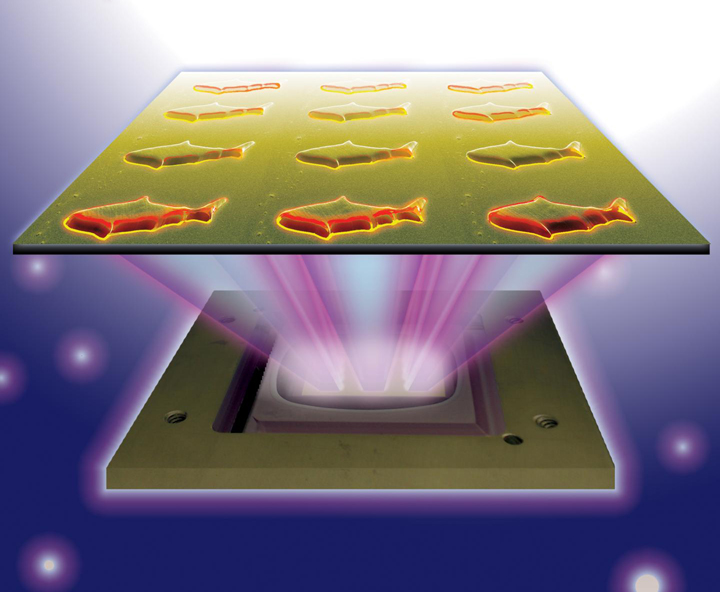TORONTO – Imagine one day being given an injection of microscopic fish that carry medicine to exactly the spot that needs treatment. Nanoengineers at the University of California, San Diego have made an amazing breakthrough in microscopic technology that could one day be used for just that.

Nanotechnology is a branch of science that deals with the incredibly small. One nanometre is one billionth of a metre. To put it in perspective, the U.S. National Nanotechnology Initiative puts it like this: a sheet of newspaper is about 100,000 nanometres thick.
READ MORE: FDA lays out plan to oversee tiny nanoparticles in food, cosmetics
It all started one day when Professors Shaochen Chen and Joseph Wang of the NanoEngineering Department met at lunch. Wang was working on “micro-swimmers” while Chen was working on 3D printing technology.
Chen said that 3D printing was already being used to manufacture static things, like phone cases and other things. But he wanted more. He wanted to create something with functionality.
“I thought, how can we make something really impactful?” he said.
So he proposed a teaming up of technologies with Wang.
The result was the development of tiny microfish that could be propelled chemically and controlled magnetically.
These little swimmers are unique in that they use organic methods to travel around in liquid, which hadn’t yet been demonstrated.
When the engineers placed platinum nanoparticles in the tails, it reacted with hydrogen peroxide which propelled the fish forward. They then used magnetic iron oxide nanoparticles in the head which allowed them to be steered with a magnet.
The findings were published in the journal Advanced Materials.
Though this engineering feat is just at the proof of concept phase, future uses could include targeted drug delivery, sensing or detoxification. In fact, the team demonstrated this ability by incorporating nanoparticles that were able to neutralize toxins. Not only did they capture toxins from bee venom in a test, but the microfish also lit up when encountering the toxin.
“The neat thing about this experiment is that it shows how the microfish can doubly serve as detoxification systems and as toxin sensors,” said the co-first author Wei Zhu, a nanoengineering PhD student in Chen’s research group.
Some other practical uses that they could be used for in the future might include cleaning up oil spills, said Chen, something that could be extremely environmentally impactful.
The team also developed a way to 3D print these fish incredibly fast. While it may take hours to print out something on a traditional 3D machine, the engineers can print off one in mere seconds using something called photo-enduced polymerization where a liquid turns into a solid when exposed to light. And there is the possibility of printing up to 100 at a time, Chen said.
- Canadian man dies during Texas Ironman event. His widow wants answers as to why
- Invasive strep: ‘Don’t wait’ to seek care, N.S. woman warns on long road to recovery
- ‘Sciatica was gone’: hospital performs robot-assisted spinal surgery in Canadian first
- ‘Super lice’ are becoming more resistant to chemical shampoos. What to use instead




Comments